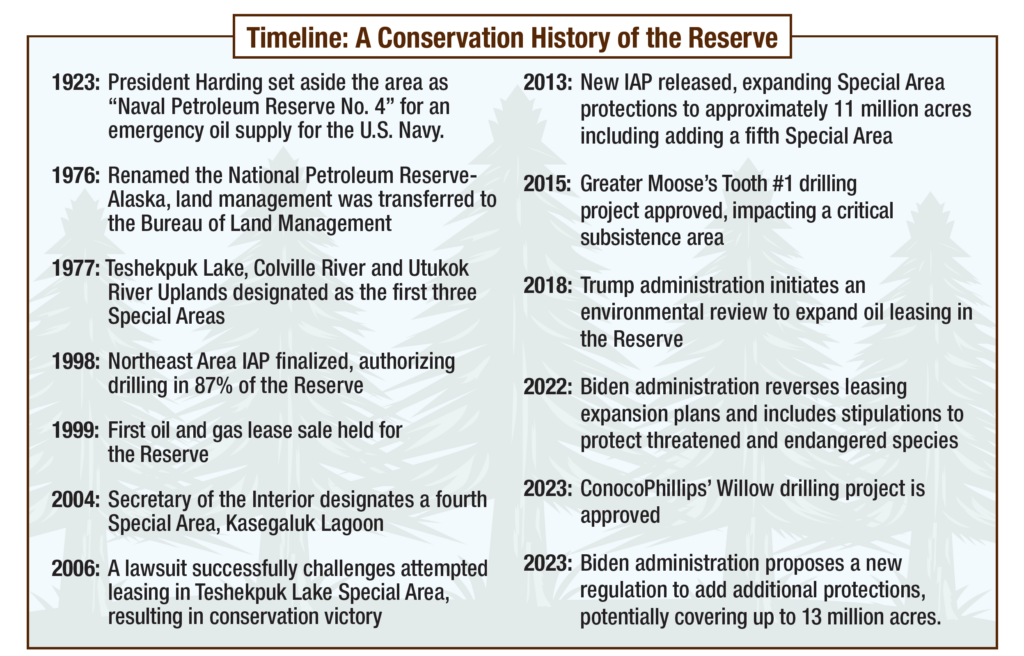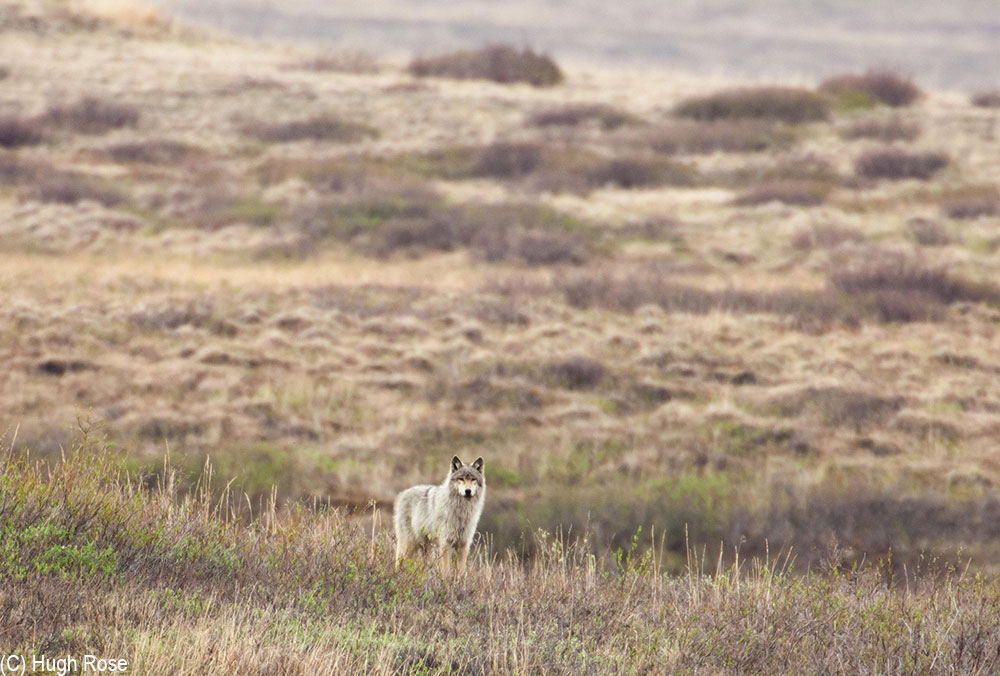Safeguarding Our Western Arctic: A Quick Journey Through Time

America’s Western Arctic – and in particular the National Petroleum Reserve-Alaska (Reserve) – is a landscape that catapulted to the forefront of public attention as the Willow project gained notoriety. Yet, the Reserve is more than just Willow; it’s a region of Alaska that the League has worked to protect for decades, and we’ve recently seen positive steps toward stronger protections in Biden’s first term. As those efforts continue and we await the outcome of the Biden administration’s most recent rulemaking process, we wanted to share an abridged recent history of attempts to both exploit and protect the Reserve.
About the landscape: the Reserve is the largest single unit of public lands in the nation, spanning nearly 23 million acres across Alaska’s western North Slope. It includes some of our nation’s most vital natural resources — millions of acres of wilderness-quality lands with critical habitat for migratory birds, brown bears, caribou, threatened polar bears, walrus, endangered beluga whales and more. The Alaska Native communities that live in and around the Reserve have maintained a subsistence lifestyle for thousands of years based on its living resources.

Protections for the ecologically rich region date back to 1977 when Congress attempted to balance oil exploration with “the protection of environmental, fish and wildlife, and historical or scenic values” of the Reserve and officially designated “maximum protection” for the first three “Special Areas” – Teshekpuk Lake, Colville River and Utukok River Uplands.
In 2013 Alaska Wilderness League, partners and allies celebrated a huge milestone when the Department of the Interior (DOI) under President Obama adopted a management plan that put in place sensible conservation protections for 11 million acres of the Reserve. DOI spent years working with Tribes, local governments, the state of Alaska, the Western Arctic Caribou Herd Working Group and the public to develop the plan. With the clear majority of public comments (including those from League advocates like you) supporting strong protections for key areas and resources, DOI increased the number of and “maximum protections” for designated Special Areas for the exceptional wildlife and wilderness values of Teshekpuk Lake, Colville River, Utukok River Uplands, Kasegaluk Lagoon and Peard Bay.
Yet, throughout the decades, the “maximum protection” offered in these areas has not been clearly defined, and different administrations have even gone so far as to offer up oil and gas leases in designated Special Areas.
In fact, despite the 2013 protections and fierce opposition by Alaska Wilderness League and partners, between 2015 and 2018 oil allies secured permits to drill in the Reserve. ConocoPhillips, the main leaseholder in the Reserve, aggressively expanded their oil development on state lands to include the new “Greater Mooses Tooth #1” and “Greater Mooses Tooth #2” projects near the community of Nuiqsut. Then, in late 2018, the Trump administration directed the Bureau of Land Management (BLM) to conduct a new environmental review process, ultimately undoing protections put in place under the Obama administration to make more land available to oil and gas drilling.

The League aggressively fought the Trump administration’s efforts and in January of 2022, the Biden administration stopped this review and reinstated previous Reserve protections.
Then, to add durability and strength to Special Area protections, in September of 2023, the administration proposed a process to expand Special Areas and to ensure that “maximum protection” shall remain in place as long as the unique characteristics of a Special Area remain present. This includes clarifying what “maximum protection” actually means. For more than 10 million acres, it means an outright prohibition of selling any future oil and gas leases. The proposed rule also strengthens environmental and subsistence protections and encourages the BLM to pursue co-stewardship of lands, waters and wildlife with Tribes.
With thousands of comments from members like you, we’re advocating for the strongest possible protections in this recent conservation regulation process, and fingers crossed we see some durable protections for this region that millions of migratory birds, raptors, wolves, polar bears and countless others call home.

To test your knowledge of the Teshekpuk Lake region of the Western Arctic, take our quiz here!
